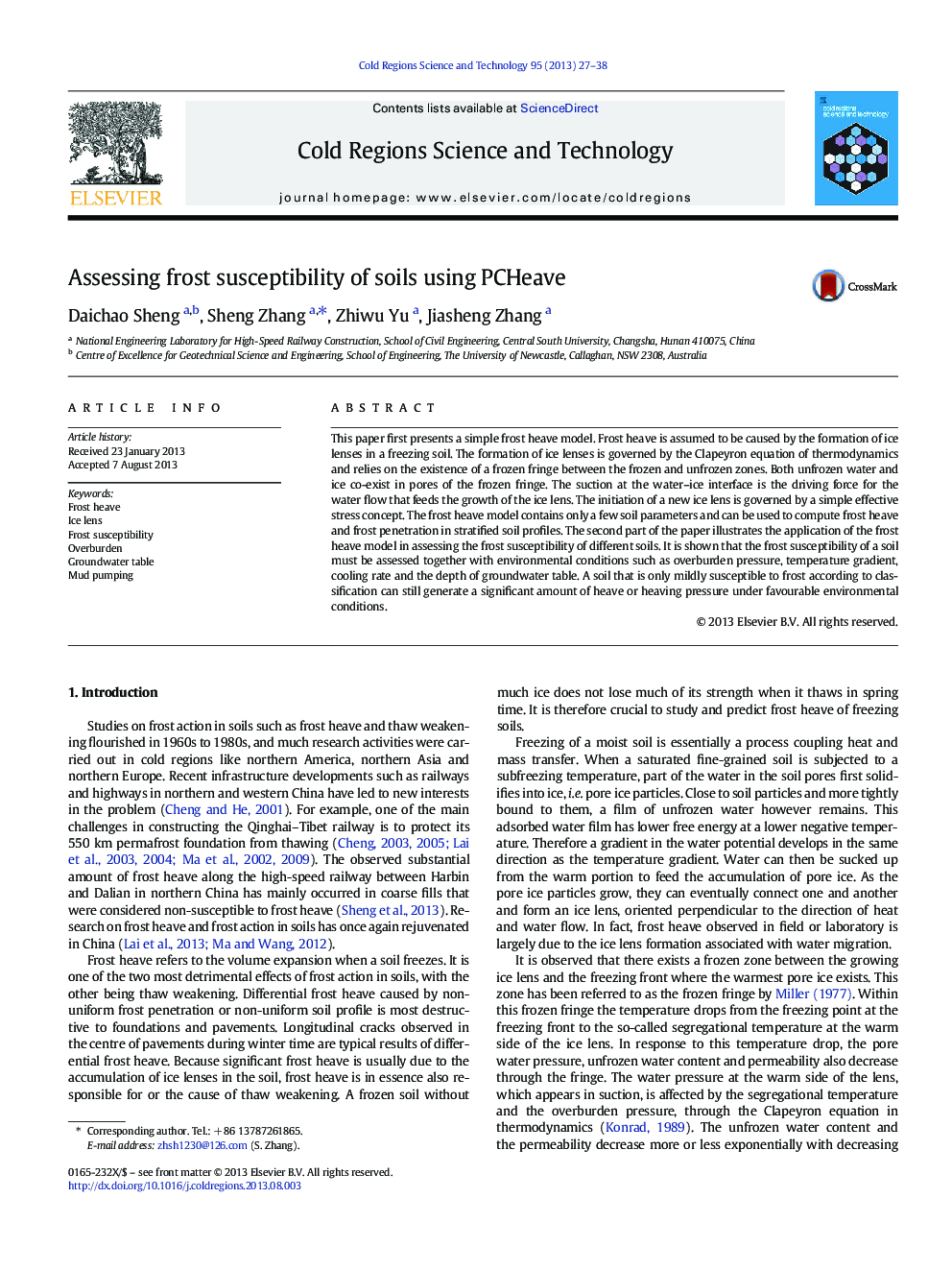| Article ID | Journal | Published Year | Pages | File Type |
|---|---|---|---|---|
| 6427001 | Cold Regions Science and Technology | 2013 | 12 Pages |
â¢A simple frost heave model based on the rigid ice concept is proposed in this paper.â¢The model simulates the formation of discrete ice lenses in freezing soils.â¢It has relatively few parameters and all parameters have clear physical meaning.â¢The frost heave model is used to analyse the frost susceptibility of different soils.â¢It is shown that the frost susceptibility depends on environmental conditions.
This paper first presents a simple frost heave model. Frost heave is assumed to be caused by the formation of ice lenses in a freezing soil. The formation of ice lenses is governed by the Clapeyron equation of thermodynamics and relies on the existence of a frozen fringe between the frozen and unfrozen zones. Both unfrozen water and ice co-exist in pores of the frozen fringe. The suction at the water-ice interface is the driving force for the water flow that feeds the growth of the ice lens. The initiation of a new ice lens is governed by a simple effective stress concept. The frost heave model contains only a few soil parameters and can be used to compute frost heave and frost penetration in stratified soil profiles. The second part of the paper illustrates the application of the frost heave model in assessing the frost susceptibility of different soils. It is shown that the frost susceptibility of a soil must be assessed together with environmental conditions such as overburden pressure, temperature gradient, cooling rate and the depth of groundwater table. A soil that is only mildly susceptible to frost according to classification can still generate a significant amount of heave or heaving pressure under favourable environmental conditions.
